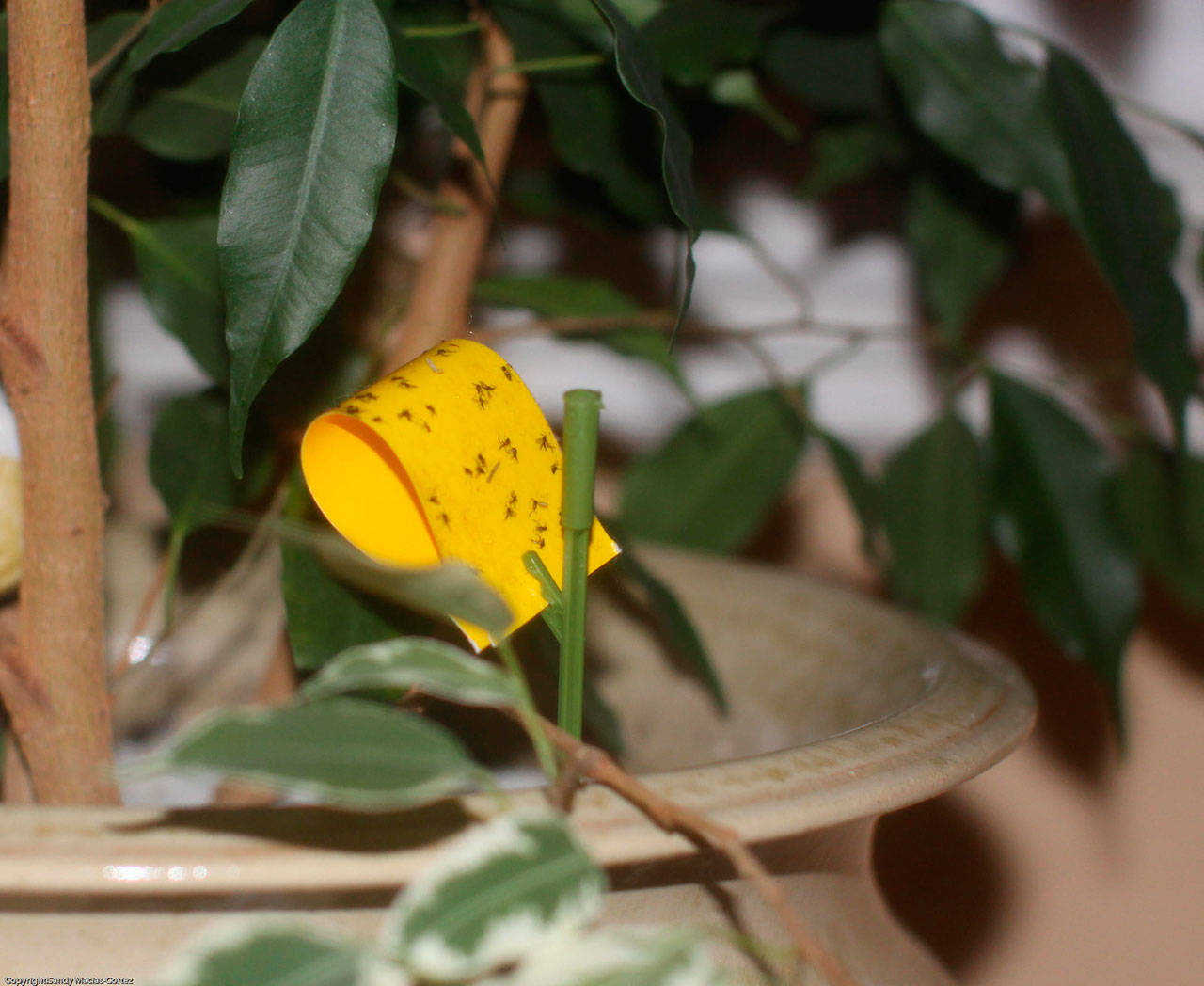Fungus gnats are annoying. Not to be confused with their equally annoying cousin, the fruit fly, fungus gnats are about 1/8 inch long and live in the moist soil of your indoor or greenhouse plants. They feed on decaying organic matter and the larvae will feed on young roots.
Although these nuisance gnats don’t usually cause significant problems, if left to breed they can damage young plants and seedlings.
The life cycle of the fungus gnat is 21-40 days, depending on the temperature. They lay their eggs on top of the soil, so a few gnats can quickly become a problem.
Up the defenses
The first defense against fungus gnats is prevention, followed by cultural controls with chemicals being the last option and only if the population of the gnat is causing significant plant damage.
Quarantine any new plants or those you are bringing in from outside. Any plants suspected of having gnats should be thrown out or carefully repotted. The best potting or seed starting medium is a clean soilless mix with excellent drainage.
Fungus gnats thrive in wet, humid conditions. It’s important not to overwater plants, and to let the top one to two inches of the soil dry out between waterings when possible.
A water meter that helps determine when to water is a good tool if overwatering is a chronic problem. Adding a fan to move the air and reduce excess humidity can help.
Keep your plants clean and free of any old plant debris. For houseplants strict water control, hygiene and cultural controls like adding a one-half inch deep layer of sharp sand or fine grit to cover the soil will help stop the fungus gnat cycle.
For immediate results, yellow sticky traps can be used to trap and kill adult flies. Currently WSU does not recommend chemical control for houseplants.
In the greenhouse, practice good hygiene by keeping all pots, flats, benches and drains clean. Remove any weeds or algae growth on a regular basis. If adult fungus gnats are found, place yellow sticky traps in affected areas. Traps will not only attract and kill the adult gnats, they will indicate the severity of the problem.
Advanced solutions
If needed, the next step may be a biological control. Both Bacillus thuringiensis (Bt) and beneficial nematodes (Steinernema feltiae, very small, beneficial worms) are commonly used as a soil drench to control gnat larvae. The names may sound exotic but the products can be found online or in garden stores. Neither is a fast-acting solution and Bt may require repeat applications.
For the greenhouse, other over-the-counter products that contain horticultural oils and/or pyrethrums can be effective, especially in reducing the adult population. Although these products are listed as safe or even OMRI (Organic Materials Review Institute) organic, it is essential to read and follow the directions for proper use.
Newer products that contain other natural substances derived from bacteria are becoming available. Currently WSU does not have approved product recommendations but it may be worth researching.
Again, it’s important to only buy products labeled for the particular pest/location you are dealing with.
Susan Kalmar has been a Master Gardener since 2017. She managed a greenhouse for a large florist and has a deep dislike for fungus gnats.



